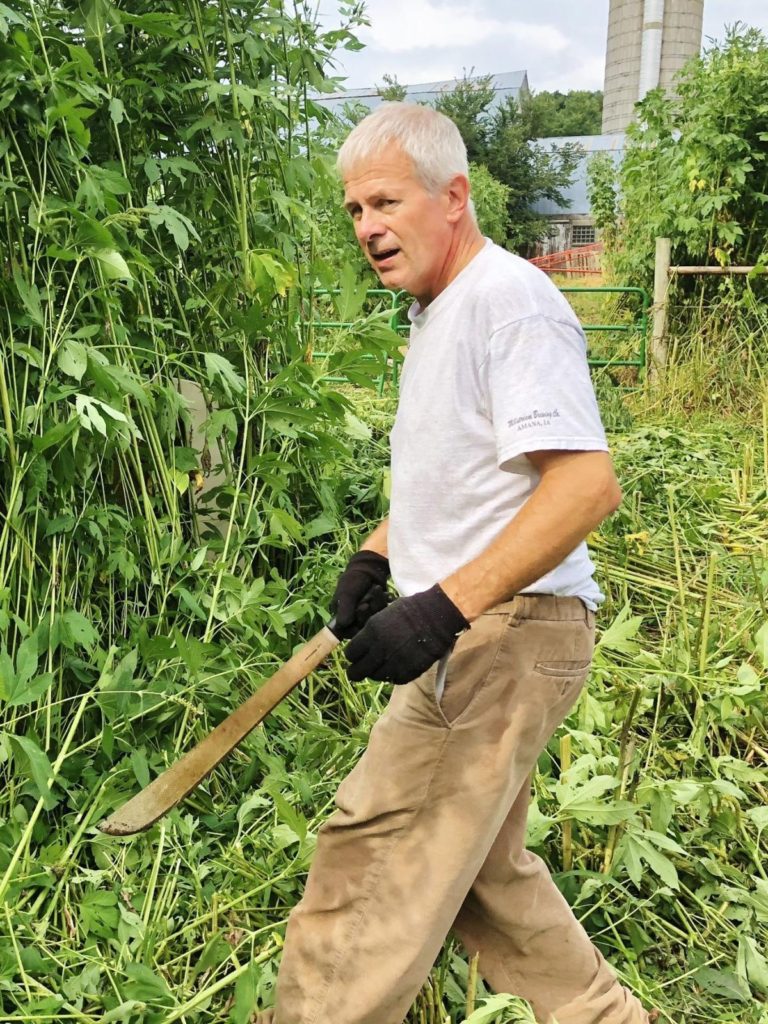Back Home by Chris Hardie
» Download this column as a Word document
» Download photos that accompany this story
» More columns by Chris Hardie
» Chris Hardie’s headshot
“With age comes wisdom, but sometimes age comes alone.” – Oscar Wilde
Technology and equipment make many farm chores a breeze compared to the old days. But farming is still a physically demanding occupation. There’s always lots of lifting, carrying or hauling that needs to be done on a daily basis.
I know many old dairy farmers who spent decades squatting between cows — farmers who can hardly walk anymore because their knees are shot. The job takes its toll on the body.

Thankfully, I don’t need to milk cows anymore. And being only halfway through my 55th year, I hardly consider myself to be old. I liken to George Burns, who once said that you can’t help growing older but you don’t need to become old.
But I also need to temper that optimism — which my wife calls denial — with the reality that I cannot push myself physically like the days when my hair was thicker and brown.
In my normal deliberate research to prepare for this column that involves a few mouse clicks, I discovered some bleak facts. Muscle mass for men peaks at age 30. We start losing problem-solving at 19; endurance at 22 and memory at 28. Our brain-cell activity peaks at age 45.
In other words, it’s a long downhill ride to old age. I recommend a well-stocked lounge car for the most comfortable ride.
But stubbornness can actually increase with age — or it does in my case. Just recently, in my seemingly never-ending quest to clean the barnyard with just a manure fork and my pickup, I rose early and pitched two loads. The next morning I was no longer limber in my lumbar region, which was protesting in pain. I felt like my lower back had pulled an all-nighter in the lounge car.
The lower back — or lumbar region — includes the five vertebrae that support much of our upper body. With discs that act like shock absorbers between the vertebrae, ligaments that hold the vertebrae in place and tendons that attach muscles to the spinal column, it’s a medical marvel.
But when the lumbar region is abused, the 31 pairs of nerves rooted to the spinal cord can also send waves of pain to the brain. I have dealt with lower-back pain on and off for more than 40 years. It first flared up when I was in high school. When I was in college, a physical therapist measured my legs and discovered my right leg is a little shorter.
Because most feel I’ve always been a half-bubble off level anyway, I asked why that made a difference. I was told that through time I would overcompensate for the shorter leg. That would cause my pelvis to tip slightly and put stress on my lower back muscles. He suggested I wear a heel lift to help keep me on a more even keel.
The lift helped a lot, but every so often I forget my flexibility was lost during the Clinton administration and I strain some muscles. Coincidentally it also occurs about the same time I forget — after all my memory peaked years ago — to maintain a regimen of stretching exercises that I should do.
A few times a year I schedule a visit with my chiropractor, who is usually able to patch me up after a couple of treatments. Fixing my stubbornness is beyond his ability.
It’s just a fact of life that I will always have some pain in my lumbar region. Perhaps it’s payback to all those through the years who’ve blamed me for being the cause of pain in their gluteus maximus region.
Chris Hardie spent more than 30 years as a reporter, editor



